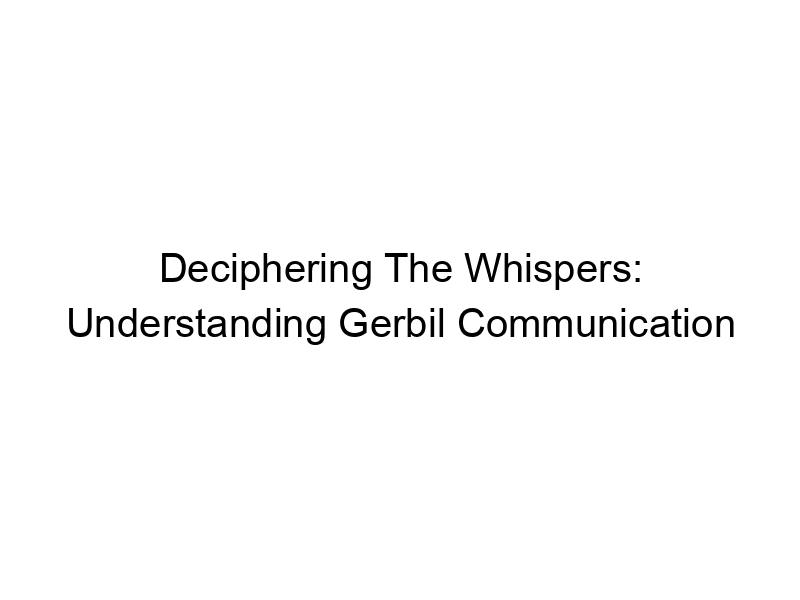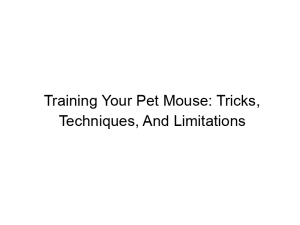Gerbils are fascinating creatures, full of complex social interactions and subtle communication strategies. Understanding their behavior is crucial for responsible ownership, ensuring they thrive in a stimulating and appropriate environment. Gerbil Behavior Explained: Understanding Their Communication dives deep into the nuances of gerbil interaction, exploring their vocalizations, body language, scent marking, and more. This comprehensive guide will help you decipher the subtle signals your gerbils are sending, leading to a happier and healthier relationship with your furry friends. We’ll cover everything from identifying stress signals to understanding the intricate dynamics of gerbil social hierarchies.
Gerbils communicate through a range of sounds. High-pitched squeaks and chirps often indicate excitement or happiness, particularly when interacting with cage mates or receiving treats. These sounds are usually short and sharp, varying in pitch and intensity depending on the gerbil’s emotional state.
A higher pitch might suggest greater excitement, while a lower pitch could signal contentment.
Chattering and Clicking
Chattering and clicking sounds are less frequent than squeaks, but they often indicate alarm or warning. This might be in response to a sudden noise, a perceived threat, or even a surprising movement within their cage. These sounds are distinctly different from the happy squeaks, tending to be harsher and more repetitive.
Low-Frequency Growls and Hisses
Low-frequency growls and hisses are almost always aggressive signals. This indicates a serious territorial dispute or a feeling of threat from another gerbil or even a human. It’s important to observe the context in which these sounds are made to understand the cause of the aggression.
Decoding Gerbil Body Language
Tail Wagging
A wagging tail can have multiple interpretations depending on the context and the accompanying body language. A slow wag might suggest curiosity or alertness, whereas a rapid wag could point towards fear or anxiety. The overall posture of the gerbil should be considered alongside the tail movement for a more accurate assessment.
Posture and Stance
A gerbil’s posture can provide valuable insights into its emotional state. A crouched posture with flattened ears might indicate fear or submission, whereas a tall, upright stance with raised fur can suggest aggression or dominance. Observe the gerbil’s overall posture to gauge its emotional state.
Grooming Behavior
Mutual grooming is a crucial aspect of gerbil social bonding. Gerbils groom each other to strengthen their social bonds, reinforcing their hierarchy and showing affection. This behavior can also be used to establish dominance; a higher-ranking gerbil might groom a subordinate gerbil to assert their position.
The Role of Scent Marking in Gerbil Communication
Urine Marking
Gerbils use urine marking to establish their territory and communicate their presence to other gerbils. The scent of urine serves as a strong indicator of individual identity and dominance. Stronger scents might signal a more dominant individual.
Facial Marking
Facial rubbing is another form of scent marking where gerbils rub their cheeks on objects within their territory to leave a scent trail. This is particularly important for establishing their territory within their cage.
Anal Gland Marking
Less commonly observed, anal gland marking can be used in territorial disputes or to assert dominance. This behavior is less frequent than urine or facial marking but is still a significant communication method.
Understanding Gerbil Social Hierarchy
Dominant and Subordinate Individuals
Gerbils live in complex social hierarchies, with one or two dominant individuals and several subordinates. Dominant gerbils often display assertive behaviors like chasing, nipping, and mounting subordinate gerbils.
Aggression and Competition
Aggression is usually a means of establishing or maintaining the social hierarchy within a gerbil group. While seemingly aggressive, these interactions are usually understood within the context of their social dynamics and are less likely to cause physical harm.
Establishing Peaceful Coexistence
Providing enough space, resources, and enrichment can prevent conflict and support peaceful coexistence between cage mates. A sufficiently large cage with multiple hiding spots and food sources reduces competition and aggression.
Interpreting Gerbil Play Behavior
Chasing and Wrestling
Chasing and wrestling are common forms of play behavior amongst gerbils, especially amongst young gerbils. This activity helps them develop social skills and learn to interact within their group.
Burrowing and Tunneling
Burrowing and tunneling are essential behaviors that cater to gerbils’ natural instincts. It’s a critical part of their well-being and provides a sense of security and enrichment.
Hoarding and Sharing
Gerbils instinctively hoard food, reflecting their natural survival instincts. This behavior might also be a form of sharing within a group, and observing how they interact with their food stores can be informative.
Recognizing Stress and Illness in Gerbils
Signs of Stress
Signs of stress in gerbils include excessive grooming, loss of appetite, lethargy, and withdrawal from social interactions. These behaviors are an indicator of problems that require attention and might necessitate a veterinary consultation.
Recognizing Illness
Illness in gerbils often manifests as changes in behavior, including increased aggression, excessive sleeping, or unusual vocalizations. Monitoring their behavior is crucial for detecting health problems early on.
Providing Optimal Housing and Enrichment
Cage Size and Setup
A spacious cage with multiple levels, hiding places, and enrichment activities is essential for a gerbil’s well-being. Consider the gerbil’s natural burrowing and exploring behaviors when designing their habitat.
Social Interaction and Companionship
Gerbils are social animals and thrive in the company of other gerbils. Keeping them in pairs or small groups of same-sex gerbils ensures social enrichment and minimizes stress. Always introduce gerbils carefully.
The Importance of Observation
Regular Monitoring of Behavior
Regular monitoring of your gerbils’ behavior is vital for early detection of any issues. Observing their daily routines, social interactions, and eating habits can help you identify any deviations that might indicate problems.
Understanding Individual Personalities
Each gerbil has a unique personality, and understanding their individual characteristics is crucial for interpreting their behavior accurately. Some gerbils might be more timid than others.
Gerbil Communication in Different Contexts
Interaction with Humans
Gerbils can learn to recognize and respond to their owners. Building trust is vital for positive interactions, and understanding their communication cues makes it easier to manage them.
Interactions within the Group
Observing interactions within a gerbil group provides valuable insight into their social dynamics, hierarchy, and overall well-being. Paying attention to the way they interact gives you a better grasp of their communication styles.
Addressing Potential Communication Problems
Aggression between Cage Mates
Aggression between cage mates is usually a result of insufficient space, resources, or improper introduction. Addressing these issues often resolves the conflict and leads to peaceful coexistence.
Fear and Anxiety
Fear and anxiety can significantly affect gerbil behavior and communication. Providing a safe, secure, and enriched environment is crucial for reducing their stress levels.
Frequently Asked Questions
What are the most common signs of a stressed gerbil?
A stressed gerbil may exhibit excessive grooming, loss of appetite, lethargy, and withdrawal from social interactions. They might also become more timid or display unusual behavior patterns.
How can I tell if my gerbils are fighting?
While some chasing and nipping is normal, serious fighting involves intense squeaking, growling, and chasing, potentially leading to injuries. Separate them if necessary.
How do I introduce new gerbils to my existing group?
Introduce new gerbils gradually, with a neutral zone and careful observation, allowing them to acclimate to each other’s scent before direct interaction.
Why is my gerbil hoarding food?
Hoarding is natural gerbil behavior, a survival instinct. Ensure sufficient food is always available.
What does it mean when my gerbil is chattering?
Chattering or clicking sounds are usually warning signals, indicating alarm or a perceived threat.
My gerbil seems unwell; what should I do?
If your gerbil shows signs of illness (lethargy, loss of appetite, unusual vocalizations), consult a veterinarian immediately.
How can I encourage social interaction among my gerbils?
Ensure a spacious cage with multiple hiding places, food sources, and toys to reduce competition and stimulate social interaction.
My gerbil is constantly grooming itself; is this normal?
Excessive grooming can be a sign of stress or boredom. Evaluate their living conditions and enrichment activities.
Final Thoughts
Understanding gerbil behavior explained: understanding their communication is crucial for responsible ownership and creating a thriving environment for your pet. By paying close attention to their vocalizations, body language, scent marking, and social interactions, you can develop a deeper understanding of their needs and ensure their happiness and well-being. Remember that providing a spacious cage, appropriate enrichment, and companionship (if suitable) is paramount. A happy gerbil is a healthy gerbil, and observing their communication is the key to ensuring their happiness. Continue to learn and observe your gerbils’ individual personalities and unique communication styles – you’ll be amazed at what you can learn about these remarkable creatures.




